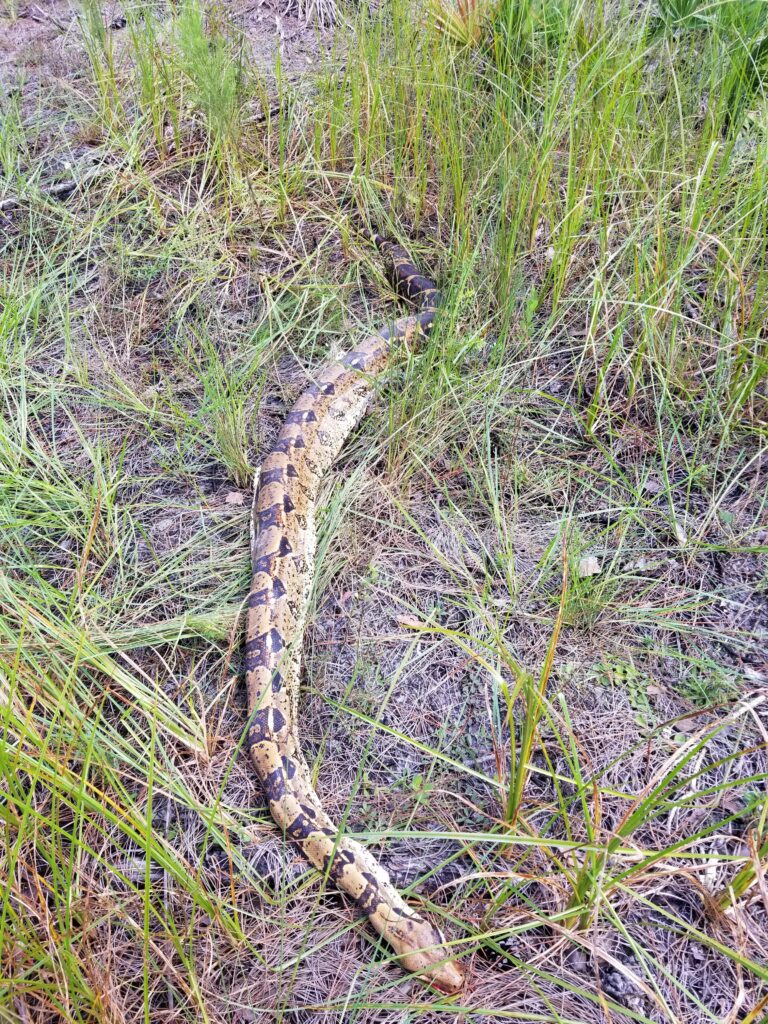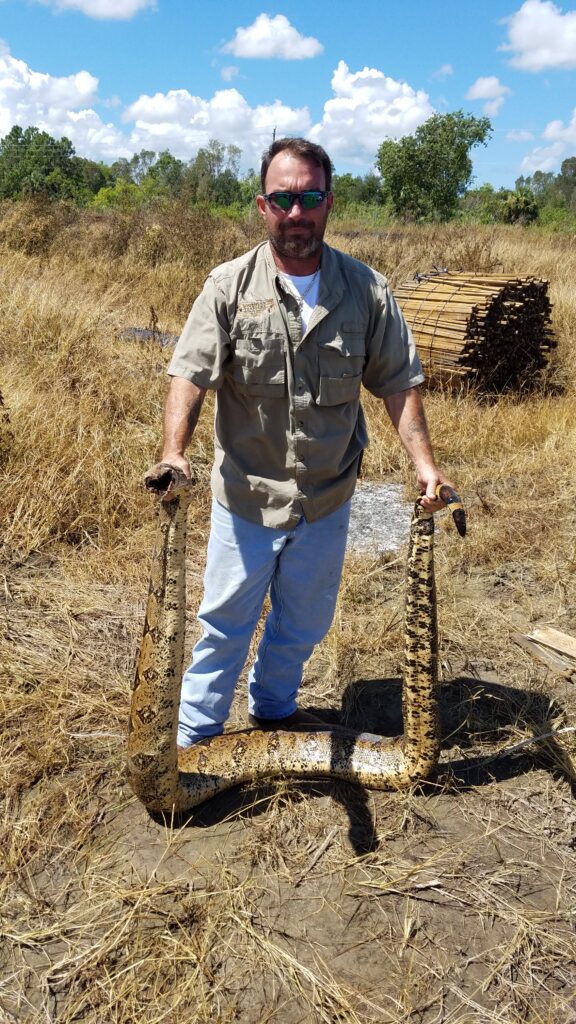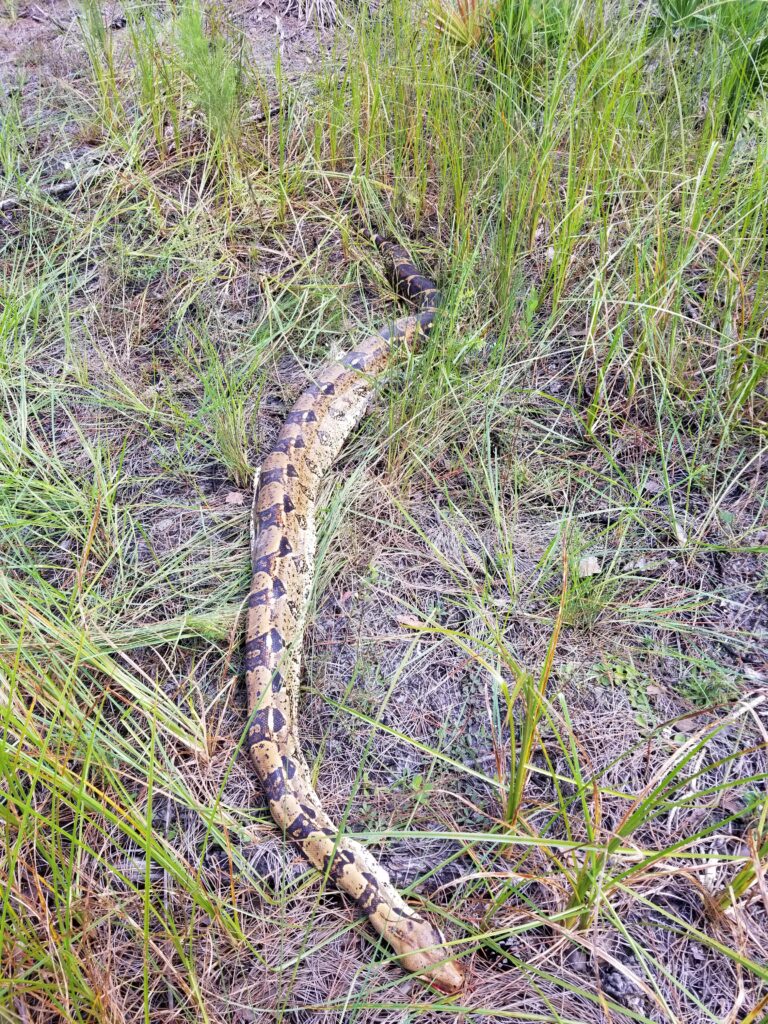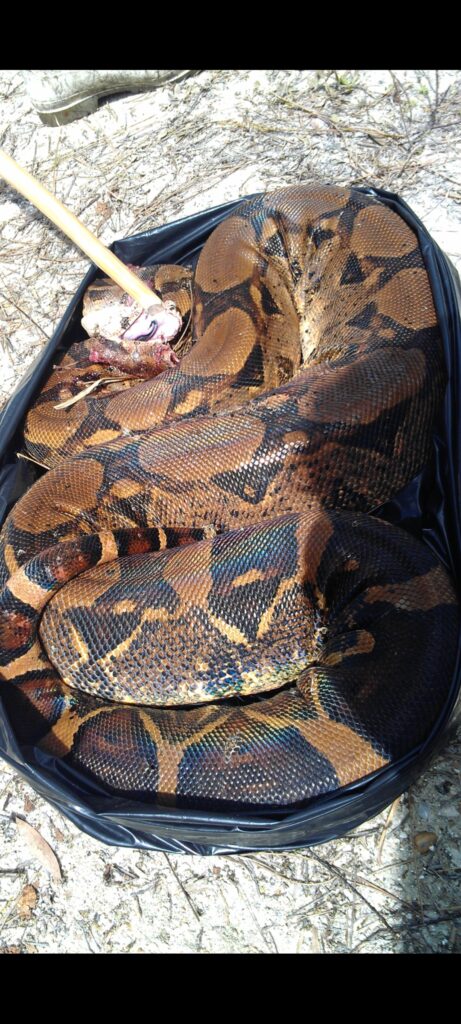
Burmese Python: (Python molurus bivittatus)
The Burmese python averages in size from 6 foot to 9 feet, the largest one found in Florida being 17 feet long. Burmese pythons are one of the largest snakes in the world. These snakes are not native to Florida and are an invasive species, which is causing extreme damage to Florida’s Everglades and native wildlife. Pythons are native to the Malay Peninsula, lower parts of China, India and some Islands of the East Indies.
Their color patterns consist of a tan color with dark blotches that run along its back and sides. Its head is shaped like a triangle or pyramid that has a dark, arrow-head shaped wedge that extends to the nose.
These snakes are semi-aquatic and are normally found in areas with water, such as the Everglades, swamps, marshes, ponds, lakes and rivers. Not only are they good swimmers but they are also excellent climbers.
Their primary diet consists of amphibians, reptiles, birds and mammals that vary in size from a rabbit to a deer, even alligators, also consuming threatened or endangered native species. Pythons may also prey upon pets such as cats and dogs.
Pythons are considered docile snakes, as they are a popular choice for a pet. Although they are listed as a conditional species in the state of Florida, which means they can no longer be acquired as pets. They are also on the federal list by the U.S. Fish and Wildlife Service as an injurious species, under the Lacey act. This act prevents the importation of pythons into the U.S. and also prohibits them from being transported across state lines.
Burmese pythons unfortunately are well-established in South Florida’s Everglades, as they have aggressively adapted to this environment and prompted authorities to deem them an invasive species. Due to the increased population of the Burmese python in the Everglades, there has been a significant decline in raccoons, opossums, rabbits and other small mammals. They have been found in Collier and Lee counties, suggesting the population is spreading to northwest Florida’s region.
Florida Fish and Wildlife Conservation Commission (FWC) initiated a task force to identify the most invasive species impacting Florida’s ecological system, this list of “reptiles of concern” have the Burmese python, African rock python, amethystine python, reticulated python, green anaconda and the Nile monitor due to their aggressive natures and size.
Burmese pythons can pose a threat to human safety, causing serious injuries. FWC has a management/control program that allows properly trained and permitted people to remove Burmese pythons and other non-native reptiles from state lands.


